Herbs are the year-round backbone of home-cooked food.
Whether it’s the secret ingredient in a spicy fall curry, a fresh spring salad, a comforting winter stew, or a naughty summer cocktail, if there’s one thing we can all agree on, herbs make everything better.
But the delights of herbs don’t come without their downsides. When you use as much as I do, the costs rack up, and they don’t stay fresh for long.
So, in theory, a herb terrarium could save the day, right? Providing an eternal supply of free herbs that keep multiplying.
In this article, I’ll explore if that dream can become a reality and, if so, how.
Ready, steady, cook!
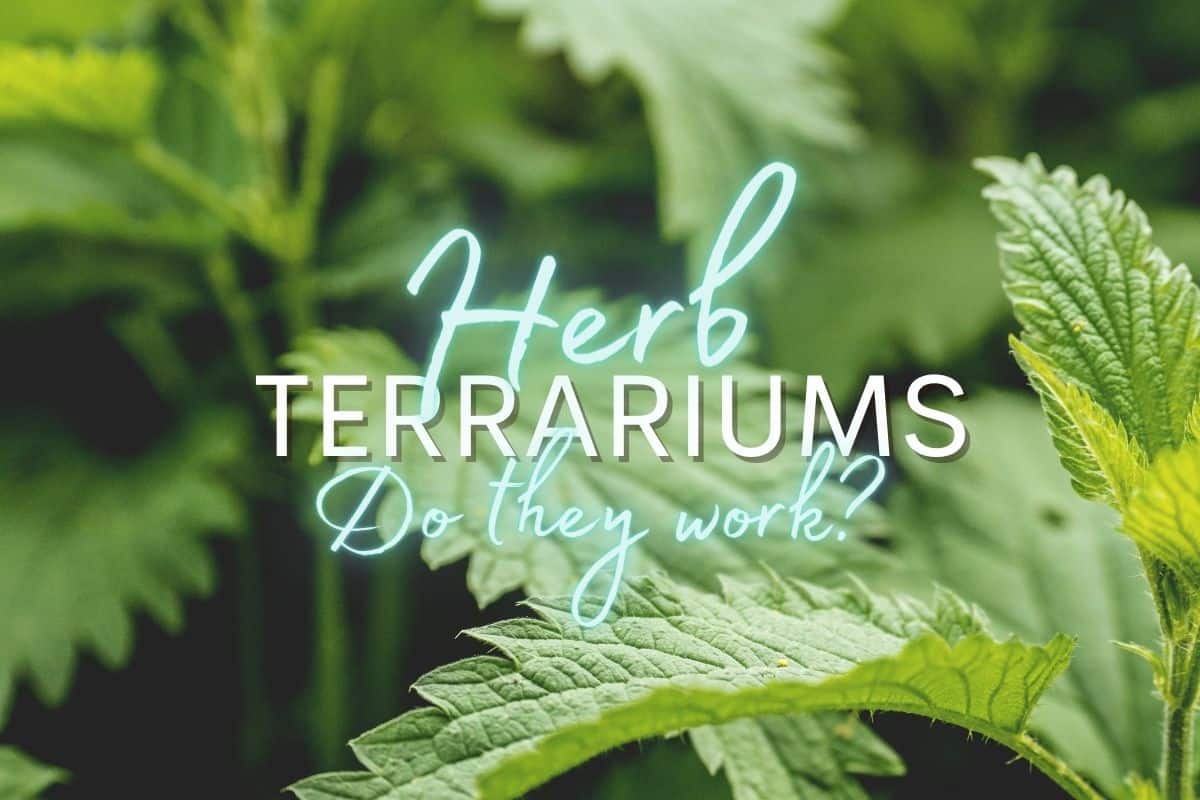
Terrarium Tribe is reader-supported. When you purchase through links on our site, we may earn an affiliate commission (at no further cost to you). 💜
Can You Grow Herbs in a Terrarium?
The short answer is yes; the long answer is… It’s complicated.
With a typical terrarium, the goal is to create a living piece of art. And while yes, it needs to be functional, it doesn’t really have a function beyond art.
A herb terrarium is an entirely different ball game.
If you want it to work (and last), you’ll need to jump through a few extra hoops.
So, let’s start with the potential three ways you could approach it; then, we’ll look at a few more things you’ll need to consider.
Herb Terrarium DIY: 3 Ways
As with any terrarium project, you can’t just shove any old herbs together and hope for the best.
Different herbs will need different conditions; they originate from and grow in different places around the world and have different requirements for water, humidity, and sunlight.
But fear not; there are some options that can work together, so let’s jump in.
1. Mediterranean Herb Open Terrarium
Starting on a high note with delicious Mediterranean herbs…
Fan favorites like oregano, sage, thyme, marjoram, and rosemary require similar conditions and can be planted together. Yay!
They like lots of direct sunlight and don’t like too much moisture, which you might have noticed makes them ideal for making an open terrarium.
An open terrarium isn’t technically a terrarium in that it isn’t a sealed ecosystem, and it will need to be watered.
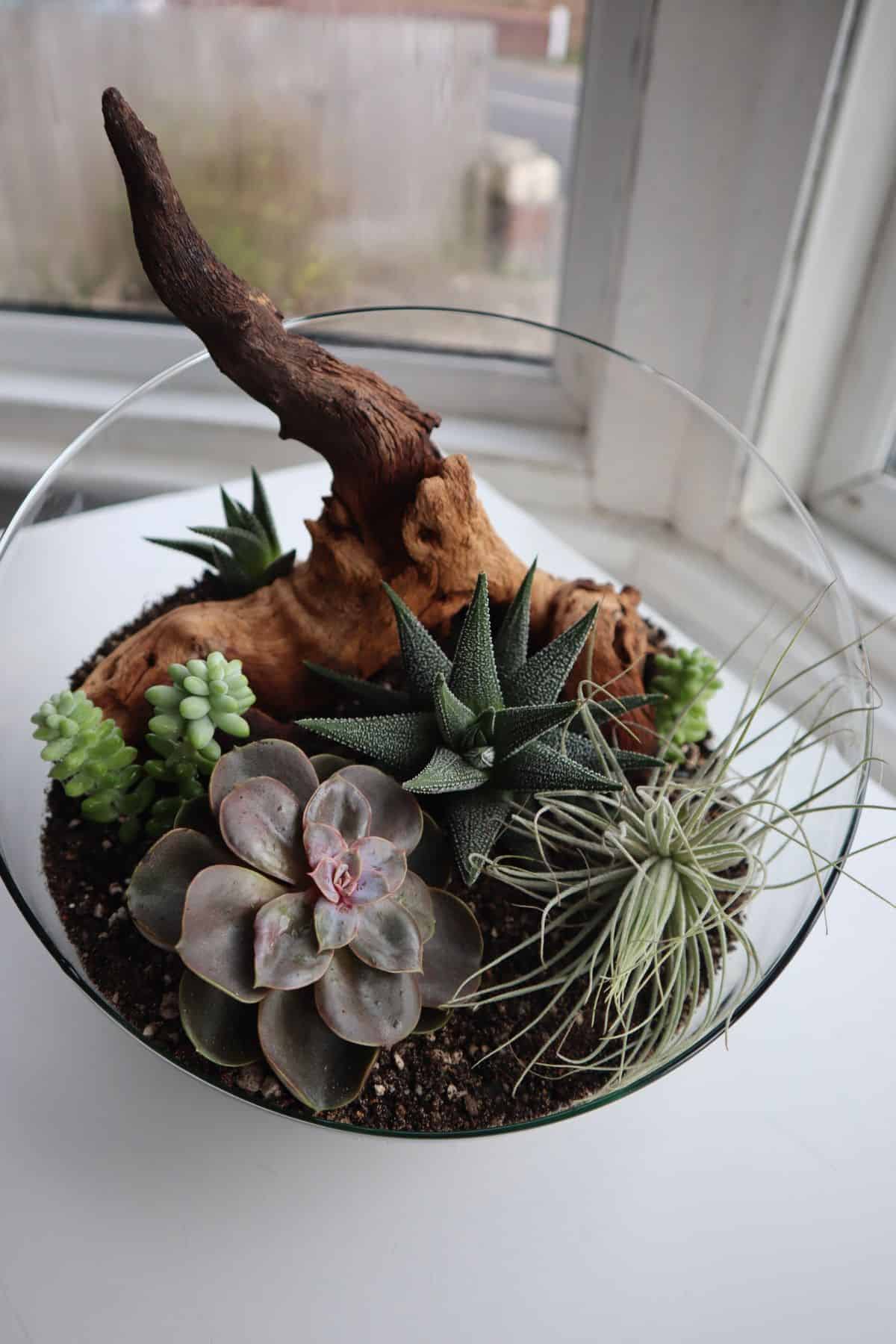
But it’s a great way to have your terrarium cake and eat it too.
2. Mint Open Terrarium
Despite enjoying similar conditions to the Mediterranean herbs we’ve just covered, mint is a special case.
On a positive note, I’m happy to announce that the iconic provider of both tabouleh and mojitos is a fabulously hardy and prolific plant. Mint is likely to do really well in an open terrarium, provided it gets enough sun.
Unfortunately, that quality also means that mint is not one to play nice with others. It will outcompete any other herb it gets planted with.
So, if you want mint in your terrarium, it will need to be a mint-only terrarium, but you can plant different varieties together if you like.
3. Moisture-Loving Herb Closed Terrarium
Another fabulously compatible herb category is moisture-loving herbs. Starring no other than basil, parsley, cilantro, and tarragon.
I genuinely couldn’t imagine my life without the former three.
They like moist soil and moderate-to-high humidity, so in theory, they’re better suited to a traditional closed terrarium.
But it’s not that easy. Unlike tropical plants you’d typically put in a closed terrarium, these herbs need a good few hours of direct sunlight.
The problem with that is that a closed system will get seriously hot. And, these plants can be grown outside in the warmer months – even where I live in the chilly North-East of England, so they’re not suitable for the tropical environment that a closed terrarium creates.
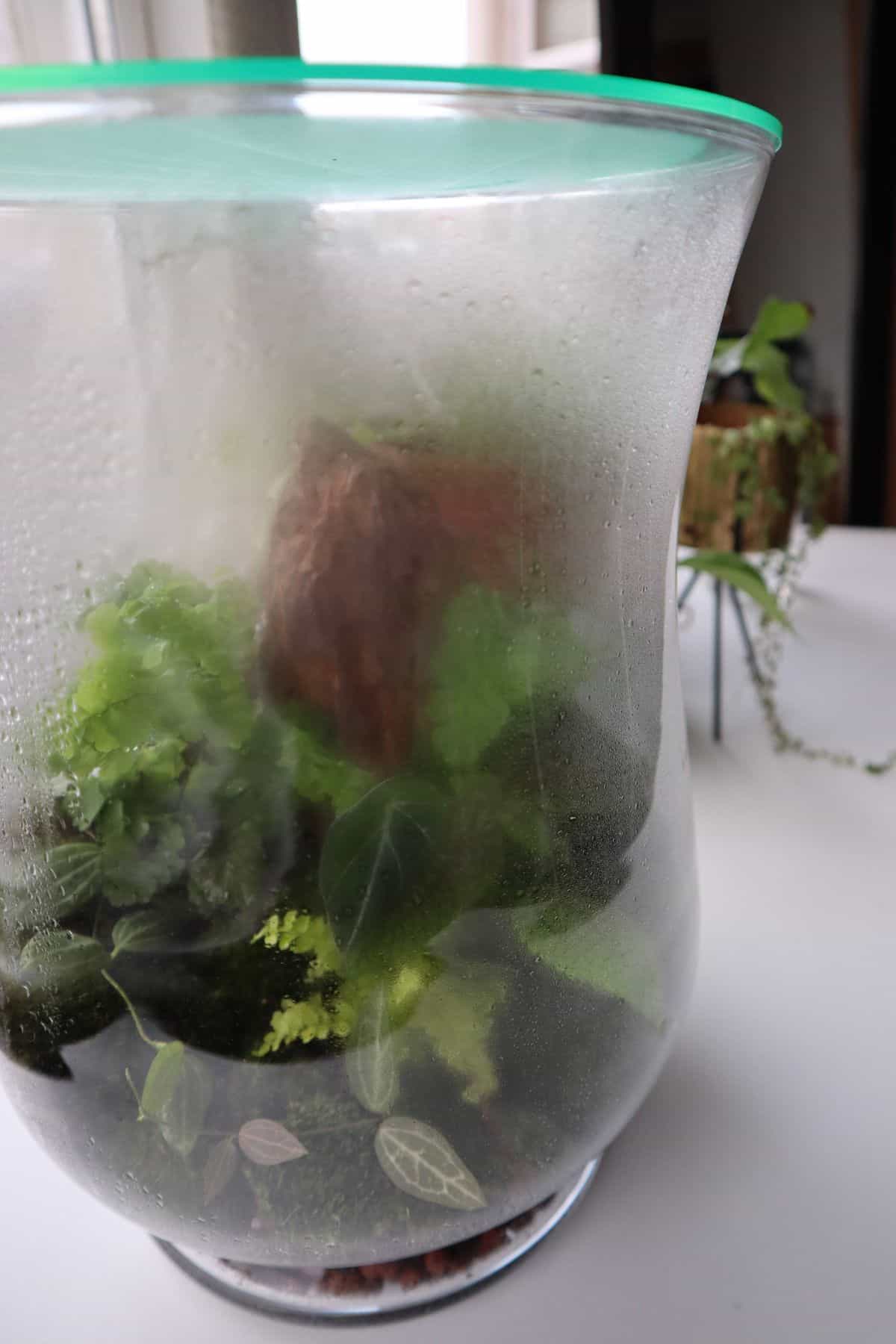
Honestly, I don’t have a great solution for this. They’d probably be better off in an open terrarium, but it’s not ideal. Moisture-loving plants need watering regularly, and a drainage layer can only do so much to prevent overwatering.
Ultimately, I’d choose a nice big pot or planter with drainage holes instead.
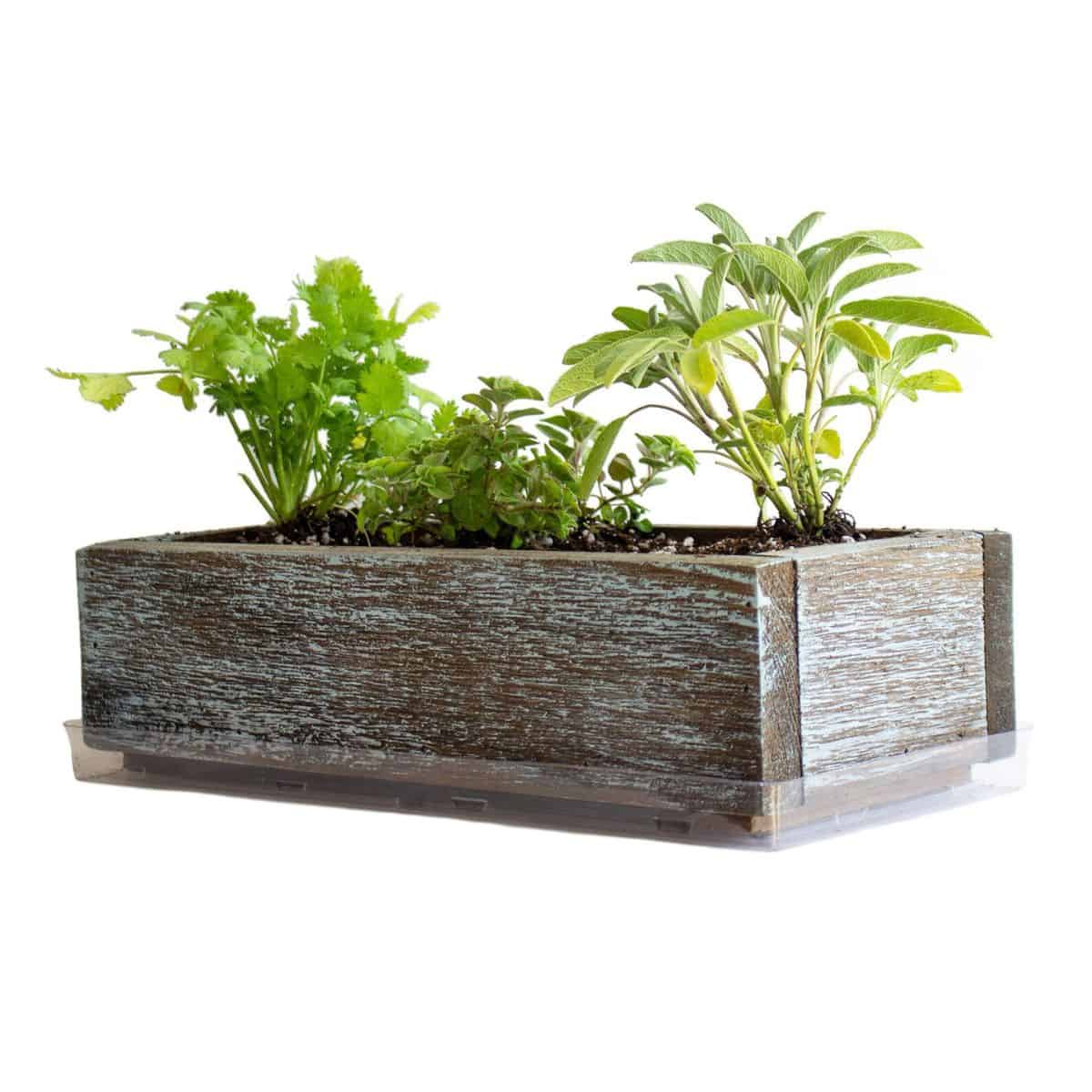
But if you really wanted to try a closed terrarium, you could try it under a grow light instead of sitting it in direct sunlight or try taking the lid off every time it’s in the sun.
Either way, it’s not a great fit, and it’s almost certainly going to take some trial and error.
Herb Terrarium Longevity
To throw another spanner in the works, if you want your herb terrarium to deliver tasty herbs for a long time, you will need to consider a few other points.
Container Size
If the whole point of a herb terrarium is to provide a regular stream of herbs for time to come, you’ll need to have a gigantic container, an entire fleet of terrariums, or be a “add a couple of leaves/just a sprig” kind of chef.
So, if you like herbs as much as I do, a fish-tank terrarium is the way to go for maximum herb-growing space.
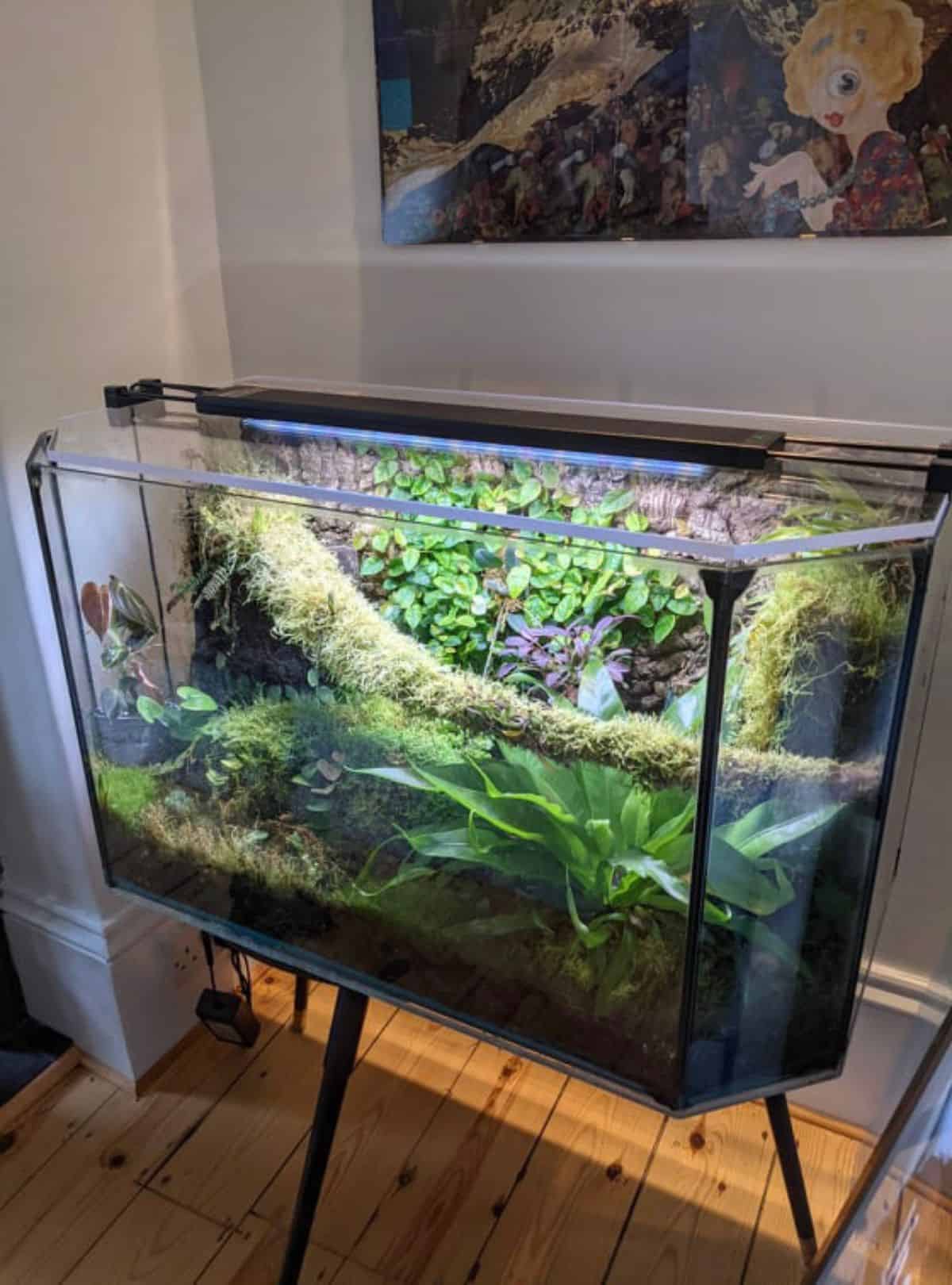
Plant Cycles
Even if you look after your herbs perfectly, some aren’t built to last.
Many herbs such as cilantro, dill, lemongrass, and most basil varieties are annual plants, meaning they won’t survive longer than a year, and parsley is biennial, so you’ll only be able to enjoy that for two.
This isn’t a consideration in the tropical terrarium world – I can’t think of a single terrarium plant that isn’t perennial!
Luckily, some herbs are perennial, including oregano, thyme, marjoram, sage, chives, and mint.
Is this a problem? Not necessarily; a year is still a decent amount of time, but it’s worth knowing.
Important Health and Safety Points (for You and Your Furbabies)
Keeping it Pet Safe
One (very important) thing to note on the safety front: not all herbs are safe for pets.
Marjoram and oregano are toxic to cats and dogs, but other herbs are too.
In an open terrarium, there’s no barrier preventing them from getting access to it, so if you have a furry friend in the home, be sure to do your due diligence with herb-specific research.
Even the most common edible plants for us can be extremely harmful to pets – my family cat was almost fatally poisoned by a tomato plant. Until that encounter, we’d never heard that it was toxic.
Keeping it Food Safe
The process of building a herb terrarium is largely the same as it would be with any terrarium. Still, there are a few modifications on the material front to keep the herbs safe (and delicious) to consume.
- Container – Use a clean glass container, not plastic.
- Drainage layer – Choose a drainage material that won’t interact with the water or plants (this isn’t my area of expertise, but leca is inert, so provided you give it a good clean beforehand, it should be a safe drainage material).
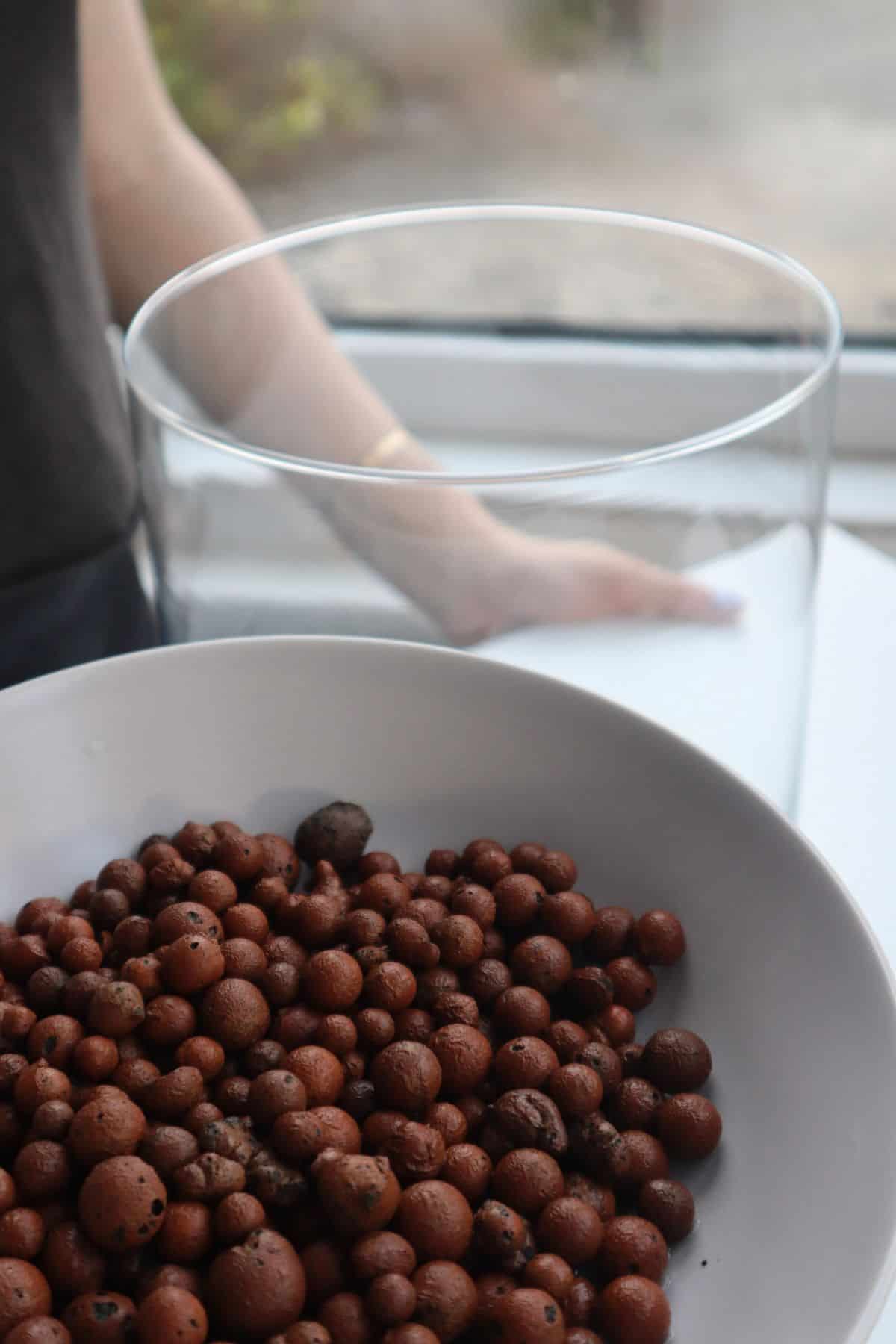
- Substrate/soil – Ideally, choose something organic.
- Herbs – Get your herbs, herb seeds, or herb cuttings from a reputable source.
That’s it From Me
I hope you found this info helpful; as a herb and closed terrarium lover, I can’t help but feel a little disappointed that they’re not quite the match made in heaven that I’d imagined.
If you give it a go and find success – be sure to let me know in the comments & share any tips you have.
